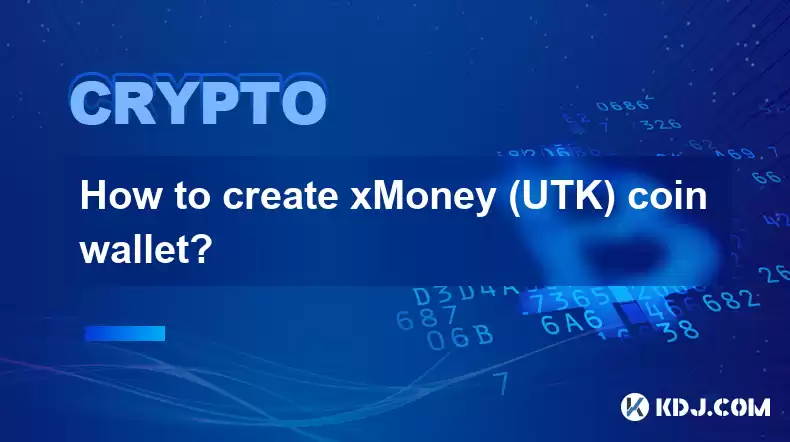-
 Bitcoin
Bitcoin $116900
0.00% -
 Ethereum
Ethereum $4280
5.48% -
 XRP
XRP $3.265
-1.45% -
 Tether USDt
Tether USDt $1.000
-0.01% -
 BNB
BNB $807.0
1.41% -
 Solana
Solana $183.1
2.93% -
 USDC
USDC $0.9999
0.00% -
 Dogecoin
Dogecoin $0.2440
6.50% -
 TRON
TRON $0.3357
-0.88% -
 Cardano
Cardano $0.8178
2.63% -
 Hyperliquid
Hyperliquid $44.13
7.45% -
 Chainlink
Chainlink $21.39
9.09% -
 Stellar
Stellar $0.4524
-0.84% -
 Sui
Sui $3.957
2.13% -
 Bitcoin Cash
Bitcoin Cash $572.7
-2.54% -
 Hedera
Hedera $0.2671
1.54% -
 Avalanche
Avalanche $24.77
4.17% -
 Ethena USDe
Ethena USDe $1.001
0.02% -
 Litecoin
Litecoin $122.3
-1.94% -
 Toncoin
Toncoin $3.432
2.26% -
 UNUS SED LEO
UNUS SED LEO $9.007
0.49% -
 Shiba Inu
Shiba Inu $0.00001396
5.26% -
 Uniswap
Uniswap $11.09
1.64% -
 Polkadot
Polkadot $4.155
4.57% -
 Dai
Dai $1.000
0.00% -
 Pepe
Pepe $0.00001253
5.11% -
 Cronos
Cronos $0.1588
2.67% -
 Bitget Token
Bitget Token $4.512
0.05% -
 Monero
Monero $275.0
0.64% -
 Ethena
Ethena $0.7527
15.10%
How to create xMoney (UTK) coin wallet?
Understanding the various UTK wallet types - custodial, non-custodial, hardware, software, and paper - is crucial before selecting a suitable option for secure storage and management of your xMoney tokens.
Dec 24, 2024 at 10:30 pm

How to Create an xMoney (UTK) Coin Wallet
Key Points:
- Understand the different types of UTK wallets available.
- Choose a wallet based on your specific needs and preferences.
- Install and set up your chosen wallet.
- Store and manage your UTK securely.
- Explore advanced wallet features such as staking and cold storage.
Step 1: Determine the Type of UTK Wallet
Custodial Wallets:
- Held and managed by a third-party custodian, such as a cryptocurrency exchange.
- Convenient but may compromise security and control over your funds.
Non-Custodial Wallets:
- Place your private keys under your sole control.
- Offer higher security but require technical knowledge and self-custody responsibilities.
Step 2: Select a Wallet
Hardware Wallets:
- Physical devices that store your private keys offline.
- High-level security at a premium cost.
- Examples: Ledger Nano, Trezor Model T
Software (Hot) Wallets:
- Digital wallets stored on your computer or mobile device.
- Convenient for quick transactions but prone to hacks and vulnerabilities.
- Examples: Coinbase Wallet, MetaMask
Paper Wallets:
- Printouts containing a QR code or private key.
- Simple and secure but inconvenient for ongoing transactions.
Step 3: Install and Set Up Your Wallet
Hardware Wallet:
- Connect the ledger to your computer and follow the on-screen instructions.
- Create a new wallet and back up your seed phrase.
Software Wallet:
- Download the wallet software and install it on your device.
- Create a new wallet and set a strong password.
Paper Wallet:
- Visit a reputable paper wallet generator website and enter your UTK address.
- Print the generated QR code or private key for future use.
Step 4: Store and Manage Your UTK
- Transfer UTK from an exchange or another wallet to your chosen wallet.
- Verify the transaction before confirming it.
- Track your UTK balance and transactions within the wallet interface.
Step 5: Advanced Wallet Features
Staking:
- Some wallets allow users to stake UTK and earn rewards.
- Participate in the xMoney protocol to generate passive income.
Cold Storage:
- Move large amounts of UTK that are not regularly used into a hardware wallet or paper wallet.
- Protect your funds from potential hacks or loss of devices.
FAQs
Q: Which wallet is the best for UTK storage?
A: The best wallet depends on your individual needs and preferences. Consider the security, ease of use, and features when making a decision.
Q: How do I keep my UTK safe?
A: Use strong passwords, enable two-factor authentication, and consider using a hardware wallet or cold storage for large amounts of UTK.
Q: Can I use any wallet to store UTK?
A: No, not all wallets support UTK. Choose a wallet that has been specifically developed for UTK storage.
Disclaimer:info@kdj.com
The information provided is not trading advice. kdj.com does not assume any responsibility for any investments made based on the information provided in this article. Cryptocurrencies are highly volatile and it is highly recommended that you invest with caution after thorough research!
If you believe that the content used on this website infringes your copyright, please contact us immediately (info@kdj.com) and we will delete it promptly.
- Shiba Inu, Pepe, and Remittix: A Tale of Memes, Hype, and Real-World Utility
- 2025-08-10 08:30:12
- Ethereum Price, ETH Tokens, Rally Prediction: Is a New All-Time High In Sight?
- 2025-08-10 08:30:12
- XRP, Elon Musk, and Wealth: A Crypto Conundrum
- 2025-08-10 08:50:12
- Retire Early with Crypto: High-Conviction Plays Beyond Bitcoin
- 2025-08-10 08:50:12
- BlockDAG, Render, and Polkadot: Charting the Course for Long-Term Crypto Dominance
- 2025-08-10 08:55:21
- Toncoin's Ascent: Price Predictions and the VERB Strategy Impact
- 2025-08-10 08:55:21
Related knowledge

How to purchase Aragon (ANT)?
Aug 09,2025 at 11:56pm
Understanding Aragon (ANT) and Its PurposeAragon (ANT) is a decentralized governance token that powers the Aragon Network, a platform built on the Eth...

Where can I buy UMA (UMA)?
Aug 07,2025 at 06:42pm
Understanding UMA and Its Role in Decentralized FinanceUMA (Universal Market Access) is an Ethereum-based decentralized finance (DeFi) protocol design...

How to buy Storj (STORJ) tokens?
Aug 09,2025 at 07:28am
Understanding Storj (STORJ) and Its Role in Decentralized StorageStorj is a decentralized cloud storage platform that leverages blockchain technology ...

What is the best app to buy Nano (NANO)?
Aug 09,2025 at 03:35am
Understanding Nano (NANO) and Its Unique FeaturesNano is a feeless, instant cryptocurrency designed for fast peer-to-peer transactions. Unlike many ot...

Where can I purchase Siacoin (SC)?
Aug 08,2025 at 11:14am
Understanding Siacoin (SC) and Its Role in the Sia NetworkSiacoin (SC) is the native cryptocurrency of the Sia decentralized cloud storage platform, a...

How to sell my Ontology (ONT) tokens?
Aug 09,2025 at 06:08pm
Understanding Ontology (ONT) and Its Trading EcosystemBefore selling your Ontology (ONT) tokens, it's essential to understand the nature of the crypto...

How to purchase Aragon (ANT)?
Aug 09,2025 at 11:56pm
Understanding Aragon (ANT) and Its PurposeAragon (ANT) is a decentralized governance token that powers the Aragon Network, a platform built on the Eth...

Where can I buy UMA (UMA)?
Aug 07,2025 at 06:42pm
Understanding UMA and Its Role in Decentralized FinanceUMA (Universal Market Access) is an Ethereum-based decentralized finance (DeFi) protocol design...

How to buy Storj (STORJ) tokens?
Aug 09,2025 at 07:28am
Understanding Storj (STORJ) and Its Role in Decentralized StorageStorj is a decentralized cloud storage platform that leverages blockchain technology ...

What is the best app to buy Nano (NANO)?
Aug 09,2025 at 03:35am
Understanding Nano (NANO) and Its Unique FeaturesNano is a feeless, instant cryptocurrency designed for fast peer-to-peer transactions. Unlike many ot...

Where can I purchase Siacoin (SC)?
Aug 08,2025 at 11:14am
Understanding Siacoin (SC) and Its Role in the Sia NetworkSiacoin (SC) is the native cryptocurrency of the Sia decentralized cloud storage platform, a...

How to sell my Ontology (ONT) tokens?
Aug 09,2025 at 06:08pm
Understanding Ontology (ONT) and Its Trading EcosystemBefore selling your Ontology (ONT) tokens, it's essential to understand the nature of the crypto...
See all articles

























































































